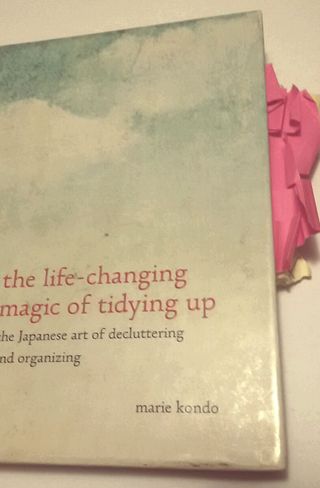Heuristics
The Story Behind Marie Kondo
KonMari's Japanese Origins and Critics
Posted January 26, 2016
I recently wrote about decluttering guru Marie Kondo for the New Yorker online. Here's part of it.

"The Life-Changing Magic of Tidying Up, Marie Kondo’s mega-selling how-to of minimalism—a tidy blend of confessional autobiography, life philosophy, decluttering strategies, and clothes-folding tips—arrived in America in late 2014. Since then, it has inspired a will to discard, it seems, in some 1.5 million (and counting) American book-purchasers with too much stuff. More than four million (and counting) copies of the book have sold worldwide.
The second Marie Kondo volume to be translated here, Spark Joy: An Illustrated Master Class on the Art of Organizing and Tidying Up, is just out. This one has pictures, and is a bit riper with particulars—there are six (short) pages about underwear, three for stuffed toys, and so on—but essentially restates the principles of the world-conquering book that preceded it.
As a recovering clutterbug myself—though not a minimalist and not a fan generally of the how-to genre’s Manichean, one-size-fits-all prescriptions—I admit I find aspects of the so-called KonMari Method (a contraction of Kondo Mariko, her name in the Japanese style) compelling, if not altogether original. The method’s anchoring principle, that we hang onto only what “sparks joy,” deftly reconfigures the notion of tidying and decluttering as mere throwing away: transformative existential keeping seems to be Kondo’s lesson. There are echoes, too, of Joseph Campbell’s dictum, “Follow your bliss.”
Kondo’s other main strategy finesses the pangs of letting go by calling for a considered, thankful hail and farewell—a ceremony, not a ham-fisted trash-bagging. Clutter, the English psychoanalyst and design teacher Jane Graves wrote in The Secret Life of Objects, is always about memory, and so emotion and sentiment. Tidying, then, is intimate work, and therefore sensitive to conceptualizing and to the subtleties of slogans. A veteran New York design journalist told me that her daughter was a KonMari convert because she felt not reproach but rather an embracing, cheery respect. This conspicuous respect extends to the clutterer, the cluttered premises, and the clutter-objects themselves. It brings a light animism to even your old socks.
Kudos, then, to Kondo. Even if her attitude, for instance, toward keeping books—that still-unread means never will be read, and that, once read, books shouldn’t be retained for rereading—strikes me as almost barbaric. And even if, in the year since her own book became a phenomenon in this country, there has been something slightly strange in the tone of public reaction—as though the “magic” of the book’s title were a literal quality, and not a bit of clever publishing hyperbole. This extends to the depiction of Kondo herself. A profile in New York magazine began this way: “As a physical presence, Marie Kondo has more in common with a snowflake than with the flesh-and-blood humans around her.”
It’s true that Kondo, just thirty years old, is a petite prodigy of tidying, possessed of a winsomely deferential and yet authoritative air. She famously started her vocation as a kid. “I have spent more than half my life thinking about tidying,” she writes in “Life-Changing Magic.” For a time, too, she was an assistant at a Shinto shrine, with its many ceremonials of respect, a common enough practice for Japanese teens. Perhaps the more suitable fanciful image is not a snowflake but a determined young heroine from a Miyazaki film, setting out daily to magically clean up the world. By her mid-twenties, Kondo’s thriving organizing consultancy in Tokyo had so many waiting-list clients that, at their request, she wrote what became “The Life-Changing Magic of Tidying Up”—in three months, according to the New York profile. Which conjures up a neatly fairy-tale-like birth for Kondo’s monster best-seller.
But there’s a more down-to-earth version of the story to be found in the Japanese publishing journal Shin-bunka…."
Read my full piece at NewYorker.com .
And on Wed. Jan 27, come join me and the New Yorker's great Roz Chast (Can’t We Talk about Something More Pleasant) discussing clutter, families, and Kondo at Kinokuniya bookstore in Manhattan.


